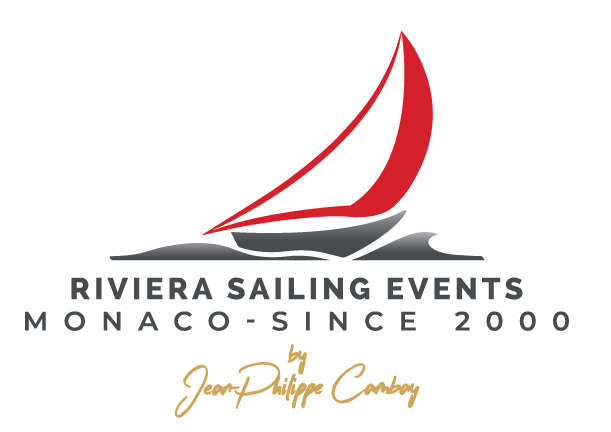
Keep reading to find out more about out technical levels. Do not hesitate to contact us to find out more. We will be pleased to answer all your questions.
Learn more about the school’s different technical levels below:
TECHNIQUE: ADVANCE UNDER SAIL AND STEER USING THE BAR:
– Prepare for the start, sailing or motor
– Fill the sail to move forward
– Use the sail to slow down
– Use the bar to steer
– Use the bar to change tack
– Use the bar to slow down
– Move to change sides without compromising the manoeuvre
SAFETY: FOLLOW THE INSTRUCTIONS OF THE MONITOR/CHEF DE BORD:
– Get equipped with the proposed equipment
– Stay attentive to safety advice
– Preparing for towing
– Learn how to use the winches safely
– Learn how to move on the boat keeping the balance
SEA-ENVIRONMENT SENSE: RESPECT THE ENVIRONMENT:
– On the beach or at a stop on the water, know where the wind comes from
– Make two sea knots
– Bringing garbage ashore
– Identify and report polluting or dangerous objects
– Comply with the instructions for preserving the environments encountered
– Reach any point on the water, on a route chosen and supervised by the instructor/chef.
TECHNIQUE: SAILING AT ALL SPEEDS :
– Adapt the sail opening to the speed
– Loosen or tilt the sail to compensate for an imbalance in the boat
– Adjust the trajectory to a given sail opening
– Keep the planned itinerary
– Choose trajectories that allow you to win upwind or downwind
– Turn around and gybe without stopping
– Follow a course or alignment
– Locate yourself approximately on a map, making the link with the landscape
SAFETY : KNOW AND COMPLY WITH BASIC SAFETY PROCEDURES AND PROCEDURES :
– Gathering (in a wing)
– Report your difficulties
– Cope with common safety manoeuvres in specific designed conditions (capping, quick stop, reefing, etc.)
– Reconize potential issues on the proposed route
– Engage in exit and entry manoeuvres at the harbour
MARINE SENSE – ENVIRONMENT: PERCEIVE THE ELEMENTS OF THE ENVIRONMENT THAT DIRECTLY INFLUENCE HIS OR HER PRACTICE :
– Know the dynamics of tides, or possible water movements
– Assess wind strength and sea condition
– Locate your starting area
– Know the most common natural species found on the water bodyer body
TECHNIQUE: CONTROL THE DRIVING AT ALL SPEEDS, INCLUDING IN OVERPOWER :
– Keep the balance of the boat by using the sail (upwind)
– Keep the balance of the boat by using the helm (downwind)
– Think of the intinerary to follow and the speeds to take to reach a given waypoint of the water body
– Identify your sailing style
– Know and perform the tasks of each position when manoeuvring
– Create and adapt the sail surface (sail change, reefing) and adjust the volume of the sails to static (low heel, Cunningham, edge, battens)
– Develop and follow a route within a defined area
SAFETY : ENSURE YOUR SAFETY UNDER NORMAL NAVIGATION CONDITIONS :
– Assess the requirements of a navigation situation
– Take part in the selection of a program or navigation area
– Manage common safety manoeuvres (man overboard, departure and arrival in
Difficult conditions, quick stop, reverse…)
– Monitor the condition of the boat
– Know the location and use of on-board safety equipment
MARINE SENSE – ENVIRONMENT : KNOWING THE ELEMENTS OF THE ENVIRONMENT TO ANTICIPATE THE CONDITIONS OF ITS PRACTICE AND SAFETY :
– Know the fundamentals of seamanship in order to ensure makeshift repairs
– Identify existing current and their orientation
– Know the main rules of the road to avoid collisions
– Know the main regulations related to practice sites
– Respect other users of the navigation area
– Know the protected natural species of the practice site
TECHNIQUE : CONTROL THE SETTINGS AND DRIVING, TO FACILITATE PILOTING IN DIFFERENT WIND AND SEA CONDITIONS :
– Adapt the settings according to the speed and wind and sea conditions to facilitate piloting
– Turn around and gybe with control of the exit angle (close, drop, tailwind)
– Reach a point on the water body without unnecessarily increasing the road (notion of a frame)
– Occupy each position during manoeuvres in coordination with the rest of the crew
– Coordinate steering and listening actions to balance the boat without changing speed
– Know how to be permanently located on the map and on the water
SAFETY : MASTER PROCEDURES TO LIMIT RISKS IN THE EVENT OF UNUSUAL SITUATIONS (DAMAGE; STRONG WIND, CALM, ETC.) :
– Be familiar with alert and reporting procedures
– Choose from the available equipment the one adapted to your level and conditions
MARINE SENSE – ENVIRONMENT : DESIGN A NAVIGATION PROGRAM ACCORDING TO THE SITE AND CHANGES IN THE CONTEXT :
– Choose a navigation area according to the dangers and weather information available, allowing an easy return, including in case of deteriorating conditions.
– Knowing where you are on the water.
– Participate in collective tasks.
– Know the rules of access and preservation of natural sites.
TECHNIQUE : USE THE VARIABLES OF THE ENVIRONMENT AND THE CHARACTERISTICS OF THE BOAT TO OPTIMIZE ITS PERFORMANCE :
– Coordinate bar-listening-move actions to optimize speed
– Constantly adapt settings and driving according to the speed and variations of wind and sea, to optimize speed
– Coordinate barre-listen-displacement actions to optimize windward or leeward gain
– Increase windward or leeward gain during turns or gybes, by adapting manoeuvres to wind and sea conditions
– Manage and coordinate the crew during the various manoeuvres
– Choose the trajectory towards the objective (adonnantes / refusantes)
– Identify areas of wind and current that are potentially more or less strong
– Master the use of different navigation techniques (GPS, estimation, bearings, piloting…) day and night
SECURITY : EVOLVE SAFELY OVER A PERIOD OF TIME AND IN EXTENDED PERIMETERS :
– Towing a boat (sailing or motorized)
– Relate the landscape encountered with the marine map
– Define and criticize your path, maintain an esteem
– Maintain the condition of the boat
MARINE SENSE – ENVIRONMENT : TAKE RESPONSIBILITY FOR THE ENVIRONMENT AND OTHER PRACTITIONERS :
– Present weather information useful for defining the navigation program.
– Identify the main phenomena that can cause wind conditions to vary within three hours.
– Organize collective tasks / manage a crew.
– Sailing in a group of solidarity practitioners.
– Ensure compliance with the rules for the preservation of natural species.
– Know the main elements of the site’s maritime, lake or river heritage.
– Know the trades related to the environment.
Get rid of all the modern and sofisticated tools and find the GPS inside of you. Remember that as part of Human Kind, we live in a natural environment. We can locate ourselves in time and space only checking the sun and studying where shades are.
We will study what is happening in the atmosphere and the physical processes that shape the weather. By studying meteorology, you will get acquainted with the sources of weather forecast for yachtsmen, learn how to interpret them correctly, and more.
If you really want to learn yachting, and not just get the rights to a yacht, choose not a training system, but a specific yacht school and a yacht instructor. Our school, Riviera Sailing Events, has been successfully teaching yachting for several years.

